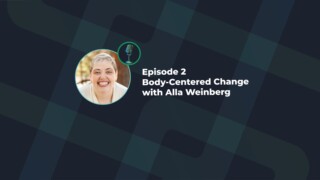The Future of Digital Products
Integrating Human-Centered Design with Continuous Development
by Jon Fukuda Based on Episode 12 of the Limina Podcast

In today’s digital age, organizations must innovate quickly to stay competitive. The ability to deliver seamless, user-friendly products is no longer optional—it’s a necessity. Yet, many teams struggle with balancing speed and usability, leading to products that frustrate users and fail to meet their needs.
How can organizations overcome these challenges? The answer lies in continuous tri-track development, a model that integrates human-centered design, ongoing research, and agile development into a cohesive process. By aligning these elements, organizations can create products that truly resonate with users.
Understanding Continuous Tri-Track Development
Traditional development models often treat research, design, and implementation as separate phases. This siloed approach causes delays, disconnects, and missed opportunities. Continuous tri-track development solves this problem by enabling:
- Continuous Research: Gathering real-time insights to inform decisions.
- Continuous Design: Iterating on solutions in response to user feedback.
- Continuous Development: Implementing updates without waiting for research or design phases to end.
This integrated approach ensures all teams work together, delivering better products faster.
What is Continuous Tri-Track Development?
At its core, continuous tri-track development combines:
- Continuous Research: Gathering real-time insights from users.
- Continuous Design: Iterating on solutions based on feedback.
- Continuous Development: Implementing changes alongside ongoing research and design.
Unlike traditional models, this approach ensures that research, design, and development happen concurrently, creating a dynamic workflow where every element informs the others.
Why Human-Centered Design Matters
Human-centered design is essential for creating products that resonate with users. It goes beyond aesthetics, focusing on understanding user behaviors, challenges, and needs.
In a continuous tri-track model, human-centered design ensures:
- Real user feedback drives decisions.
- Products address a wide range of use cases, not just the “happy path.”
- Iterations align with evolving user needs.
Bridging the Gap Between Research, Design, and Development
A key advantage of continuous tri-track development is its ability to break down silos. By integrating these functions into one workflow, organizations can:
- Ensure insights are immediately actionable.
- Avoid disconnects between teams.
- Deliver features that align with real user needs.
“Continuous tri-track development isn’t just a workflow—it’s a mindset that puts users at the center of every decision.”
– Jon Fukuda
Getting Started with Tri-Track Development

Implementing this model may seem daunting, but starting small can make a big difference. Here are actionable steps:
- Start with Small Teams
Begin with a cross-functional “tiger team” to pilot the approach. Test the model on a single project before scaling. - Invest in Collaborative Tools
Use platforms that support real-time collaboration and feedback loops across research, design, and development teams. - Focus on Continuous Feedback
Make user feedback a constant part of the process. Regular testing and iteration ensure the product evolves with user needs. - Break Down Silos
Encourage communication between departments. Share insights and progress frequently to keep everyone aligned.
Overcoming Organizational Challenges
Adopting a tri-track model isn’t always easy. Teams may resist change, or organizational structures may hinder collaboration. To overcome these hurdles:
- Promote a Learning Culture: Encourage teams to embrace experimentation and continuous improvement.
- Communicate the Benefits: Highlight how this model reduces delays and delivers higher-quality products.
- Provide Training: Ensure teams understand the principles of continuous tri-track development.
The Road Ahead
As digital products continue to evolve, integrating human-centered design into development cycles is no longer optional—it’s essential. Continuous tri-track development positions organizations to create transformative products that drive engagement, loyalty, and long-term success.


